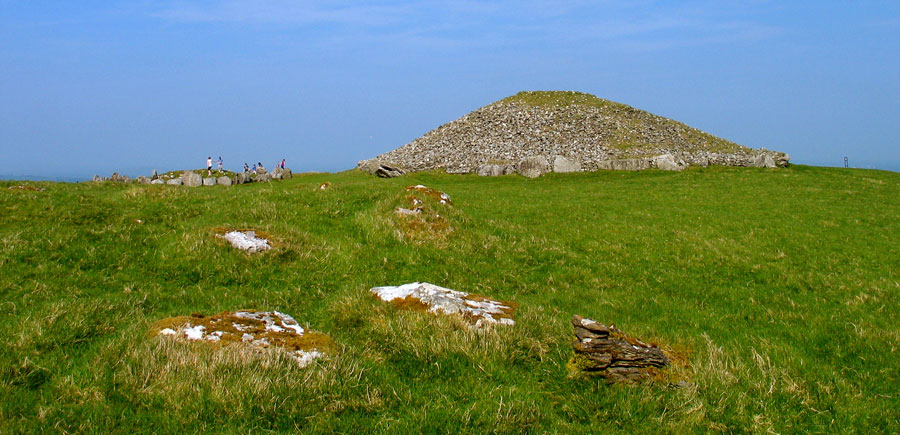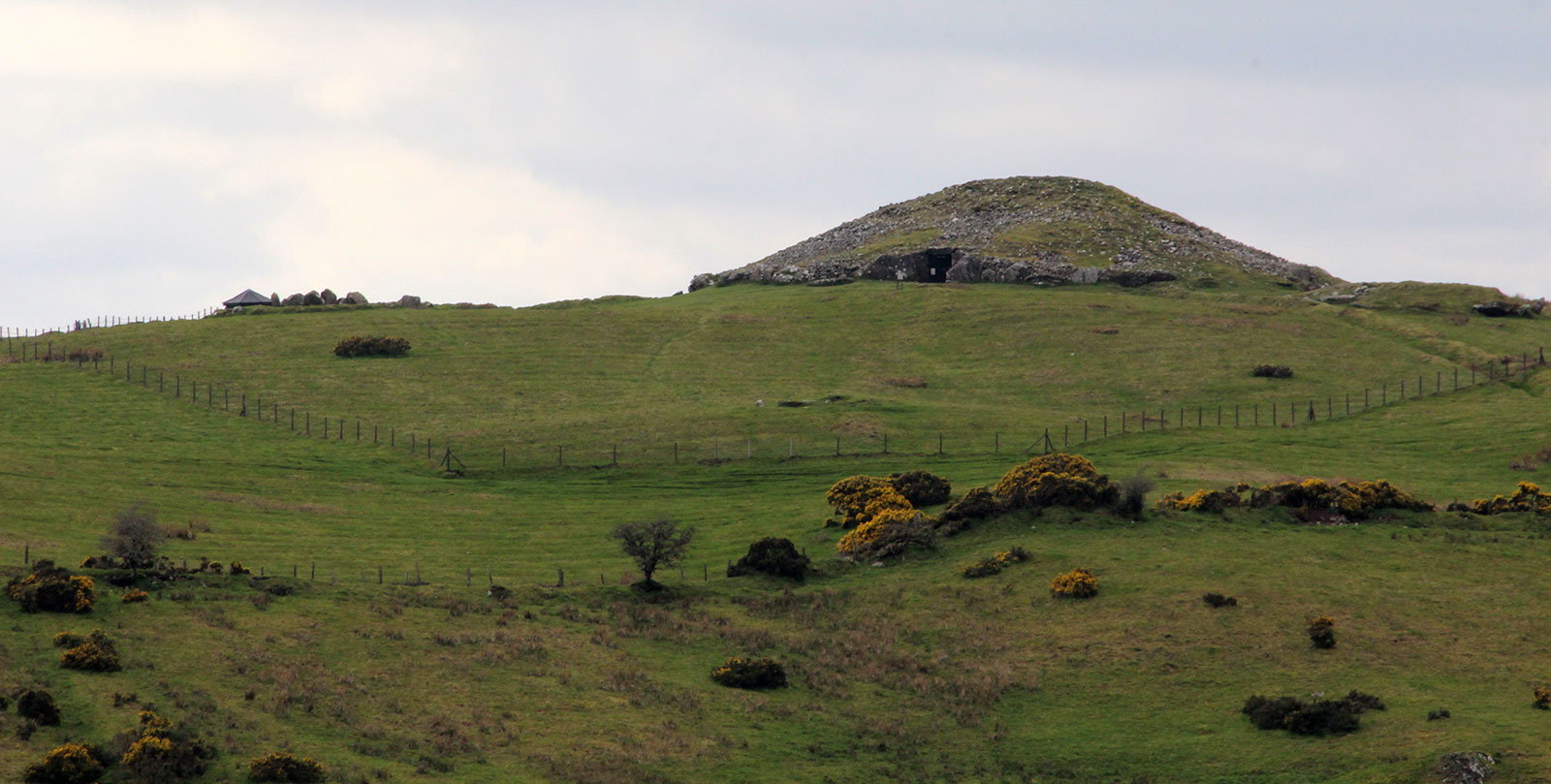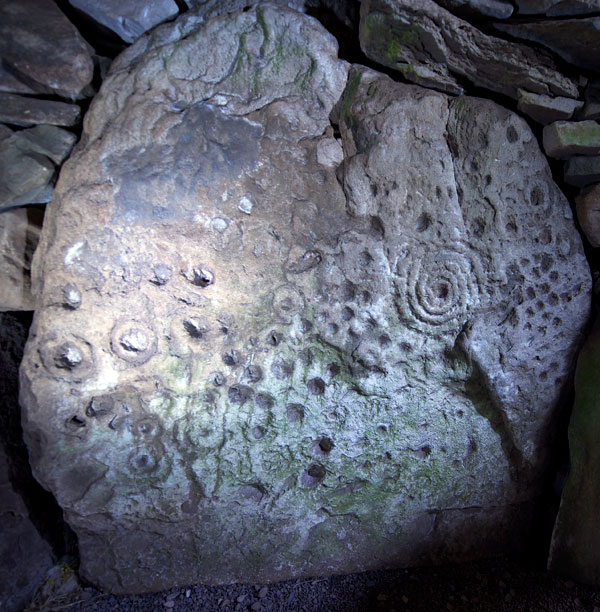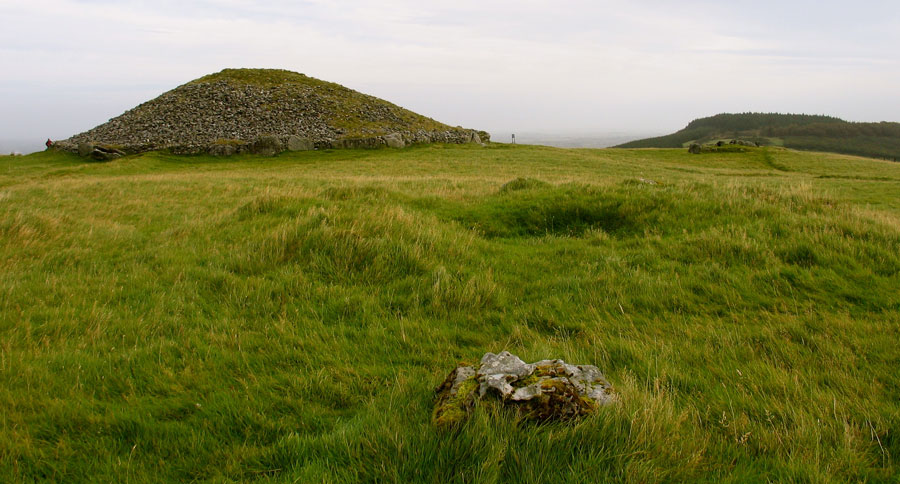Loughcrew - Cairns R and R1
Little remains of these two monuments, to the southwest of Cairn T. Cairn R is quite ruined, and perhaps measured 10 meters in diameter. Rotherham dug the mound in 1895, but found nothing of note.
He had more success at Cairn R1, which is about 8 meters in diameter. When Conwell saw it in 1865, there were 10 kerbstones in place with 5 more nearby. Rotherham found no stones remaining within the kerbs, but reckoned it had had a cross shaped chamber. He found one engraved stone, which may be the stone on display in the National Museum, which is labelled as coming from Loughcrew, but does not indicate which cairn it came from.
From Rotherham's report:
A number of fragments of urns, from 3 to 1 inch thick, are blackened by fire on the inside. Nearly all are ornamented with lines or dots, probably made with a piece of wood more or less pointed, and from these patterns I have been able to divide the fragments into five groups, each of which represents a different urn. One is ornamented with the herring-bone pattern, another with parallel lines, and the remaining three with rows of dots, variously applied. By far the greatest part of each urn is missing, but I was fortunate in obtaining portions of the rims of five, of different designs, which leave no doubt as to there being at least that number of urns in the cairn.
Among the objects found were the fragments of about a dozen pegs made from the tines of antlers. Not one was perfect, but their general appearance probably resembled that of large nails. The heads of some are nearly hemispherical in shape, and of others more the shape of a dish-cover. The largest specimen, which has been broken in half, and of which the pointed end is missing, is 5 inches long, and its head 9/10ths of an inch in greatest diameter, that of the shank being 6/10ths, where it joins the head. The diameter of the head of the smallest is half an inch. There are also a number of points of tines, which I suppose were broken off from the head above described.
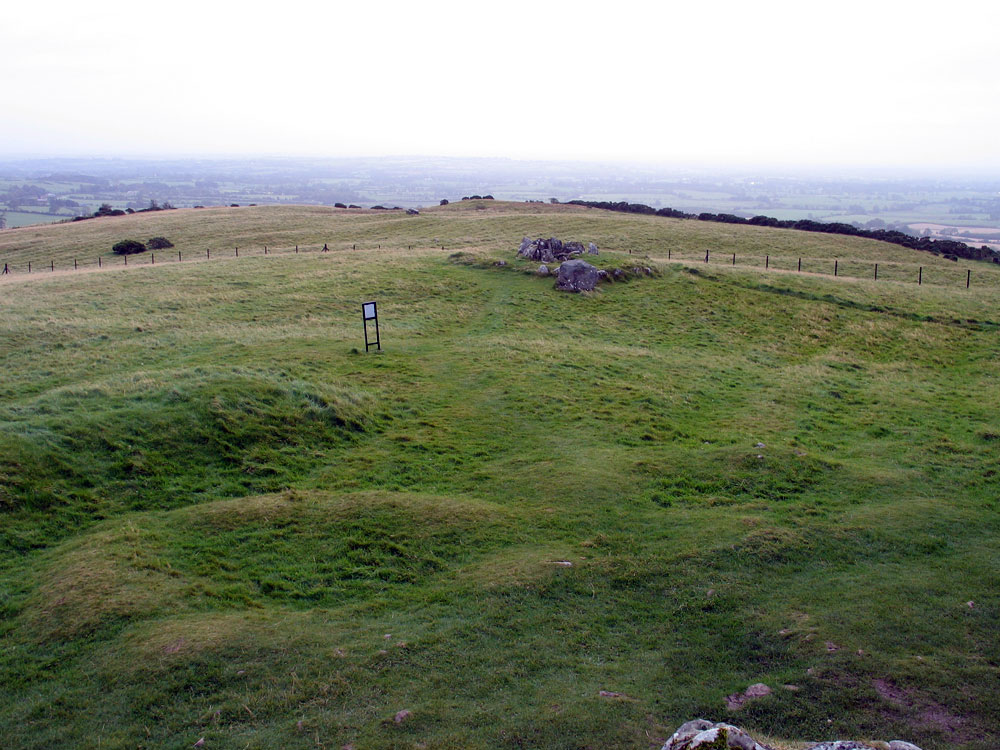
Besides these there are two or three gouge-shaped, pointed, bone objects, from 1 to 2 inches long, and from 1/3 to 1/5 an inch wide. These are only the pointed ends, and have been broken off from what probably served as handles to them. Three stone pendants were found near each other in the western part of the excavation. The largest of them is 9/10ths of an inch long, by 4/10ths of an inch in diameter, the smallest 3/5ths of an inch by 2/5ths of an inch. The latter is worn rather flat, probably from friction against others during wear. A fourth was afterwards found in some of the debris that had been thrown out of the cairn.

